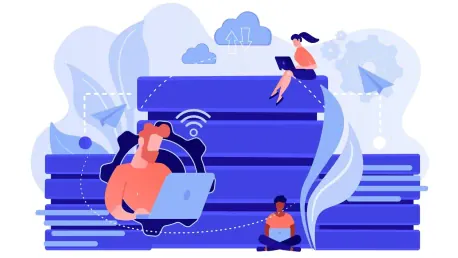As public agencies evolve to meet the ever-changing demands of modern society, adopting advanced technological strategies is no longer a choice but a necessity to maintain and improve operational readiness and public-facing services. Integrating cloud-based Enterprise Resource Planning (ERP) systems into government agencies can significantly enhance efficiency, streamline operations, and ensure better service delivery to citizens. Given the rapid pace of technological advancement, transitioning to sophisticated systems has become essential for staying ahead of challenges and fostering a more responsive public sector.
Benefits of Cloud-Based ERP Systems
Thomas Mani Padiyara, Principal and Head of SAP Business at ABeam Consulting Singapore, highlights the multiple advantages of cloud-based ERP systems, which integrate various functions into one comprehensive platform. This consolidation allows for seamless real-time collaboration across different departments, significantly enhancing the agility and efficiency of government operations. By implementing scalable solutions, agencies can address their unique challenges while optimizing performance and resource utilization. Tailored cloud-based ERP systems can adapt to the specific needs of government entities, delivering substantial improvements in efficiency and service quality.
Illustrative examples from the public sector showcase the transformative potential of cloud ERP solutions. GovTech Singapore successfully implemented scalable ERP solutions to enhance operational efficiency across its functions. Similarly, the UK Government Digital Service (GDS) overcame disruptions in human resources by adopting a phased implementation of cloud ERP solutions, enhancing HR processes incrementally. These cases underscore the versatility and impact of customized ERP solutions in addressing diverse public sector challenges, making a strong case for widespread adoption.
Enhancing Human Resource Management
Effective human resource management is crucial for public sector efficiency, as government employees play an integral role in delivering services to citizens. Digital transformation in this area involves modernizing operations pertaining to human capital management (HCM) to ensure optimal workforce utilization. Cloud-based HCM solutions automate repetitive administrative tasks, allowing HR teams to focus on strategic initiatives such as workforce development, talent management, and employee engagement.
User-friendly self-service portals are a vital component of these solutions, empowering employees to update personal information, apply for leave, and manage other HR-related functions independently. This reduces the administrative burden on HR teams and enhances employee satisfaction. Solutions like SAP SuccessFactors are specifically designed to optimize core HR processes, including payroll management, employee data storage, recruitment, onboarding, and performance management. The availability of SAP-Qualified ABeam Cloud Quick Implementation Packages ensures rapid deployment, making the transition smoother and more efficient.
Additionally, integrated talent management features within cloud-based HCM solutions help agencies streamline recruitment, onboarding, learning, succession planning, and performance management. Advanced data analytics capabilities enable HR teams to devise better recruitment strategies, optimize staffing levels, and improve overall workforce management. Built-in compliance features ensure that the solutions adhere to local labor laws and data protection regulations, such as Singapore’s Personal Data Protection Act (PDPA), thus mitigating compliance risks.
Addressing Integration and Security Challenges
While the benefits of moving to cloud-based ERP systems are extensive, the transition does present certain challenges, particularly concerning legacy systems and data security issues. One of the key steps in this transition involves assessing the compatibility between existing applications and new cloud solutions. Middleware solutions can play a crucial role in facilitating secure and efficient data exchange between systems, thereby minimizing the need for extensive modifications.
Robust testing is essential to validate data flows, system compatibility, security, and overall performance before full-scale implementation. A phased implementation strategy is highly effective, as it prioritizes the integration of high-impact functions first. This approach allows government agencies to test and troubleshoot the system in stages, reducing the risk of widespread disruptions. Ensuring data security is paramount, and this involves classifying data to determine what can be stored in the cloud and what requires stricter protection measures. Choosing a trusted cloud provider is critical to ensure compliance with regulatory standards and establish clear data residency and ownership policies, thereby preventing vendor lock-in.
Internally, agencies must invest in adoption programs that equip their staff with the necessary skills and confidence to work effectively with the new cloud ERP systems. This involves comprehensive training sessions and ongoing support to facilitate a smooth transition, ensuring that staff can fully leverage the capabilities of the new system.
Leveraging Advanced Technologies
The future of ERP systems in the public sector is increasingly driven by the need for integration, real-time insights, and enhanced user engagement. Technologies like artificial intelligence (AI) and cloud computing are making ERP systems smarter, more scalable, and more focused on the needs of citizens. AI, in particular, has the potential to greatly enhance operational efficiency by simplifying ERP usage and providing intelligent recommendations that aid decision-making processes.
Predictive analytics, powered by AI, can improve demand forecasting, optimize inventory levels, and streamline supply chain operations, ensuring that public sector resources are used as effectively as possible. AI-powered chatbots, incorporated into SAP ERP solutions, can automate routine customer service inquiries, providing instant support and freeing up human resources for more complex tasks. Machine learning algorithms within ERP systems also offer significant benefits by automating financial processes such as invoice matching and fraud detection, thereby enhancing accuracy and efficiency.
Robotic process automation (RPA) is another technological advancement that can be integrated into ERP workflows to further streamline essential tasks. RPA can automate processes such as payroll processing and procurement approvals, allowing staff to reallocate their efforts to more strategic and valuable activities. These advancements provide opportunities for government agencies to enhance public satisfaction and engagement through more efficient and responsive service delivery.
The Path Forward
As public agencies continue to evolve to meet the ever-changing demands of modern society, adopting advanced technological strategies has become a necessity rather than a choice to maintain and improve operational readiness and public-facing services. Incorporating cloud-based Enterprise Resource Planning (ERP) systems into government agencies can significantly enhance efficiency, streamline operations, and ensure better service delivery to citizens. With the rapid pace of technological advancements, transitioning to sophisticated systems is now essential for staying ahead of emerging challenges. This shift towards more advanced systems not only fosters a more responsive public sector but also enables agencies to handle increased workloads, improve data accuracy, and offer more innovative solutions to the public. Embracing these technologies ensures that public agencies remain agile, efficient, and capable of meeting the needs of the communities they serve in an increasingly digital age.









